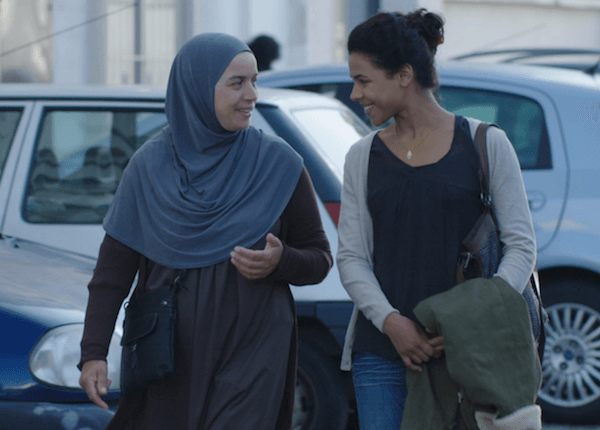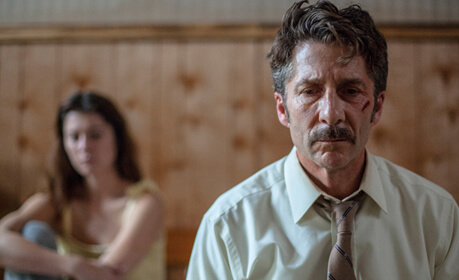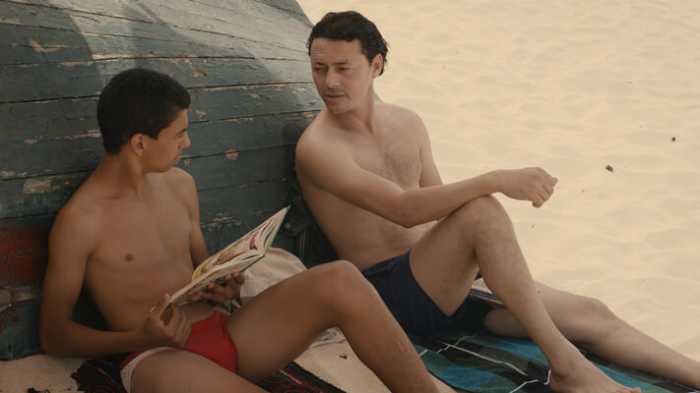Laia Artigas in Carla Simón’s “Summer 1993,” which open at the Film Society of Lincoln Center on May 25. | OSCILLOSCOPE LABORATORIES
European and Iranian directors have made many films about children that are not really intended to be seen by them. If a six-year-old girl watched her on-screen counterpart in Catalan director Carla Simón’s “Summer 1993,” she would probably reach for a Blu-ray of last year’s Pixar animated hit “Coco” within 10 minutes, although there’s nothing really unsuitable for kids in it. It does, however, take a rather loose and casual approach to storytelling.
Simón’s film depicts the dissolution of one family following the parents’ deaths from AIDS — which happens off-screen — and the formation of a new one as Frida (Laia Artigas) moves in with her aunt, uncle, and younger cousin. But while narrative incidents take place in “Summer 1993,” Simón’s approach is observational. She didn’t make “A FILM ABOUT A CHILD DEALING WITH DEATH.” “Summer 1993” respects the fact that Frida might place a different weight on the events she lives through than the adults around her. Simón uses her visual style to capture a child’s perspective, especially at the beginning of her film.
Simón is telling her own life story. Her mother was a heroin addict who was already HIV-positive when she gave birth to the future director in the 1980s. In the film’s press kit, she discusses the importance of shooting “Summer 1993” in rural Catalonia: “To me it was very important to return to the real places where I moved when I was six. The landscape in La Garrotxa is very particular. It’s surrounded by mountains; you barely see a sunrise or a sunset, and in summer the range of greens is huge.”
Carla Simón brings viewers back to her six-year-old self
The cinematography does a tremendous job of capturing the texture of the plant life of the region where the film was shot. It’s important that the film’s title includes the season when it takes place: there’s a clear sense that Frida’s life would be harder in a colder and less welcoming physical environment.
When “Summer 1993” begins, it depicts Fri-da by herself most of the time. If other people are present in the same frame, their bodies are usually partially cut off. Its story details the gradual expansion of her world. By the half-hour mark, it encompasses a trio of women and girls: Frida, her younger cousin Anna (Paula Robles), and her aunt Marga (Bruna Cusí). Men are conspicuously absent. But eventually, an entire extended family becomes part of Frida’s life, with the social tensions that brings.
The backstory of Frida’s mother is left off-screen and her father’s death is never explained at all, but Simón’s public statements seem to blame her real mother’s death on post-Franco Spaniards’ mistaken notion that part of their newfound freedom included embracing hard drugs.
Marga and her husband Esteve (Oscar Isaac-lookalike David Verdaguer) were part of a ‘90s “neo-rural” generation who rebelled instead by moving to the country and trying to find a life outside the social pressure cooker. But they were only 16 years removed from the end of Franco’s dictatorship, and Frida’s grandparents still stood by their support of him during the Spanish Civil War. Not all of this is explained in “Summer 1993” itself, and Frida or Anna certainly didn’t understand it well, but it affects Frida’s life story.
As “Summer 1993” continues, pressure mounts on Frida to abandon the solitary state she was in during the opening scenes and fit in with a large family. Esteve and Marga could hardly be more welcoming parents. Still, Anna has lived with them since birth and, no matter how friendly she is toward her cousin, Frida can’t jump in and act as though she has priority over this four-year parent-child relationship.
The four actors did extended improvisations as a family before the film shoot began and the chemistry they developed shows; they have a convincing intimacy together. It even extends to a scene where Marga casually remarks that she’s on her period, removes a bloody tampon, and throws it away on-screen: something you’ll never find in an American film about a young girl.
Simón clearly thought long and deeply about how to film the story of her childhood. “Summer 1993” avoids coming to clear conclusions about Frida’s future, ending in media res. From there, it cuts to a dedication to Simón’s mother. The film approaches Frida on her own terms and doesn’t assume these are simple to find. Constructing a story that works grief and the difficulty of making new connections into its form rather than simply talking about these emotions and experiences from the outside is hard, but Simón managed the trick.
SUMMER 1993 | Directed by Carla Simón | In Catalan with English subtitles | Oscilloscope Laboratories | Opens May 25, Film Society of Lincoln Center | Elinor Bunin Munroe Film Center, 144 W. 65th St. | filmlinc.org





































